In pictures: China’s coal industry pollutes the Yellow River basin
A field investigation by Greenpeace China reveals open-cast coal mining and chemical pollution in a river that supplies 50 cities
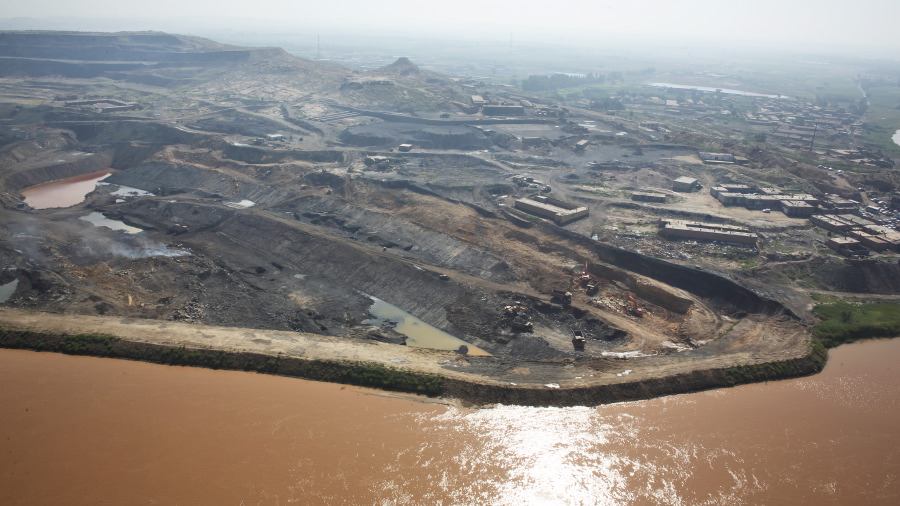
China’s Yellow River – which supplies more than 50 cities and large swathes of China’s agricultural land – is being contaminated by industrial chemicals and its embankments undermined by coal mining according to a field investigation by Greenpeace China.
The investigators also found evidence the coal industry is diverting water from the river, potentially exacerbating serious water scarcity across much of China.
The middle section of the Yellow River wends it way north up through Inner Mongolia, and then back down through Shaanxi and Henan provinces in Western China.
Here, along the banks of the river – known as China’s ‘mother river’ – open cast coal mining, which began here in the 1970s, continues to take place in 2014 under the guise of ‘mine restoration’, according to Greenpeace investigators.
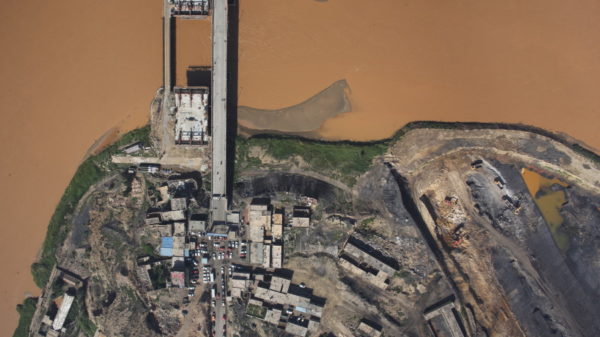
You can see above the bank of the Yellow River has become an open pit mine and slag heap at Wuhai, Inner Mongolia (August 2014). Investigators have found the mine is undermining the embankment of river. The mine simply doesn’t exist in public records.
But it’s not just coal mining that takes place here: there are clusters of coal industrial parks, which includes coal processing plants and coal chemicals industries, spanning 100 miles of the river.
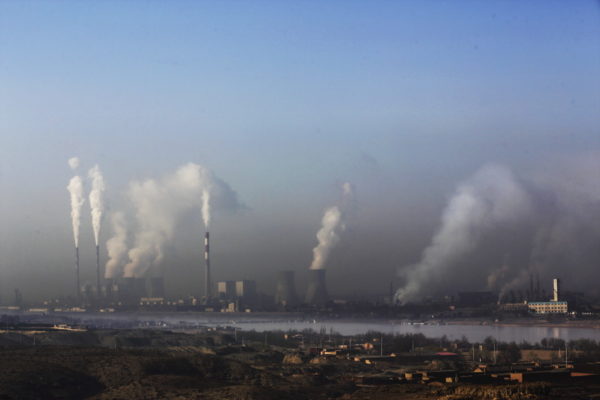
Above, the Yellow River flows next to the an industrial park in Huinong district, Inner Mongolia.
The operations at the coal industrial parks use a lot of water in their processes and discharge huge amounts of waste water into the environment.
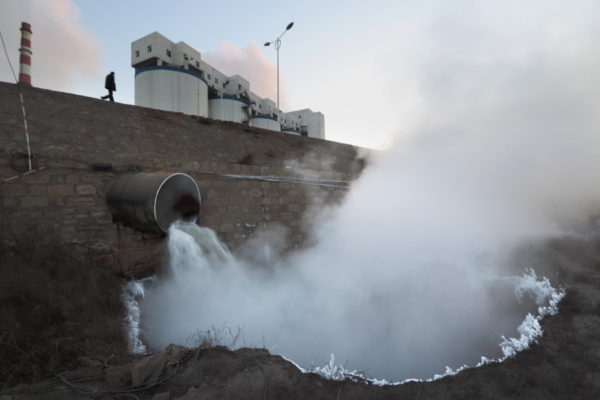
Greenpeace has documented there are at least 30 industrial waste water tanks and waste water outlets along the so-called ‘100-mile pollution zone’ – and most of them have taken inadequate measures to prevent seepage, investigators say.
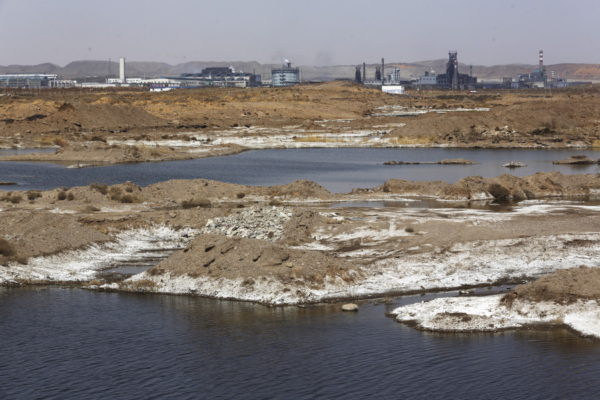
Industrial chemical waste water seeps through the sandy banks of the upper/mid-reaches of the Yellow River in Inner Mongolia, shown above.
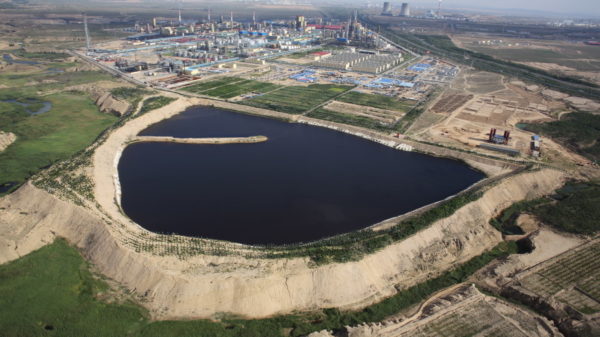
Field investigators say that this huge waste water tank attached to a coal chemicals factory isn’t properly sealed and the waste water seeps through the sand and stones into the ground and into a ditch. But Ningdong Baofeng Coal Industrial Park, which mainly produces coke and methanol, that none of its waste water is discharged.
Other companies that have been observed polluting this stretch of the river include: Qinghua Coal Chemical and Wuhai Chemical Industry.
The waste water discharge from the coal industry can contain toxic chemicals.
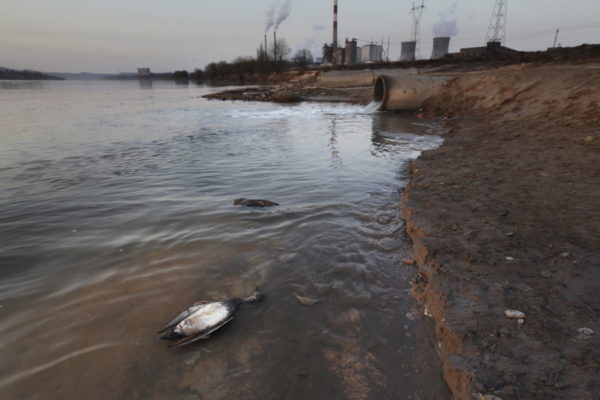
Wildlife including birds and fish can be killed by the high levels of chemicals in the water.
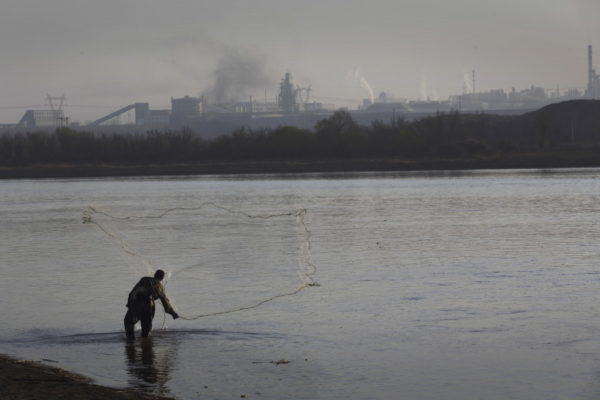
One of the impacts of the water pollution is that yields of fish in the Yellow River have been depleting.
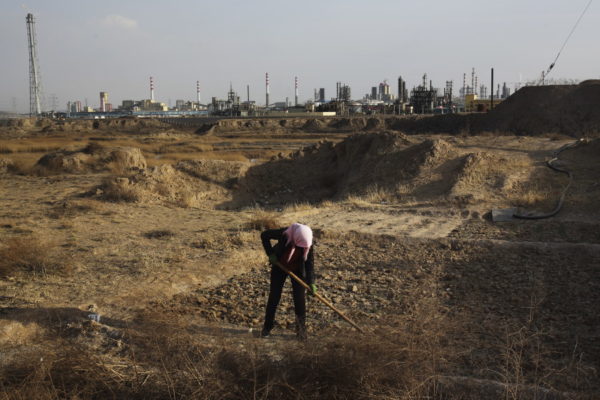
Here, a woman tends to her land, situated near Ningxia Baofeng Energy plant. But the land has not yielded many red dates or sweetcorn after they used the water from a nearby ditch to irrigate the plants.
The government has relocated the villagers living near the plant.
Another problem is that the Yellow River basin’s grain-producing provinces of Henan, and Inner Mongolia and Shaanxi, have been experiencing severe drought conditions this summer. More than two million people were affected.
The Ministry of Environmental Protection has warned that in 2015 based on local development needs, cities along the Yellow River will face a shortfall in water approaching 5 billion cubic meters, and water scarcity rate will reach 17%.
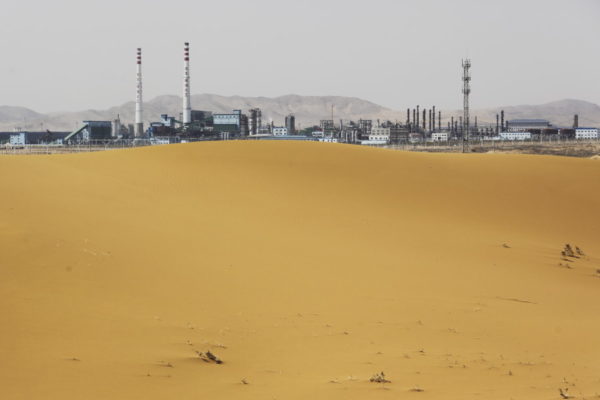
The water-thirsty coal companies exacerbate the water scarcity in the Yellow River basin by funnelling off water to use in their industry.
One example, is the Qinghua Group Limited Tenggeli the Fine Chemicals Branch, in the Tenggeli Industrial Park (shown above), Alashan, Inner Mongolia. The factory siphons off groundwater using 40 wells, each 160-180 metres deep.
Despite China’s plan to keep annual coal consumption below 4.2 billion tons up to 2020 – as China has room to increase coal consumption by 600 million tons a year, meaning an annual increase of around 2.7% on average.
The growing coal industry’s hubs are mainly situated in the Yellow River basin.
Image copyright: Greenpeace/Lu Guang




